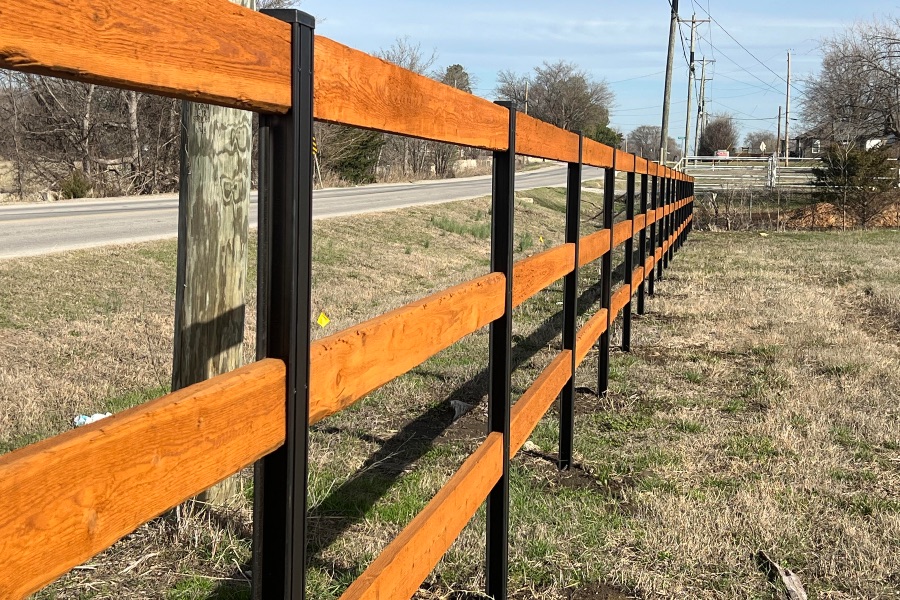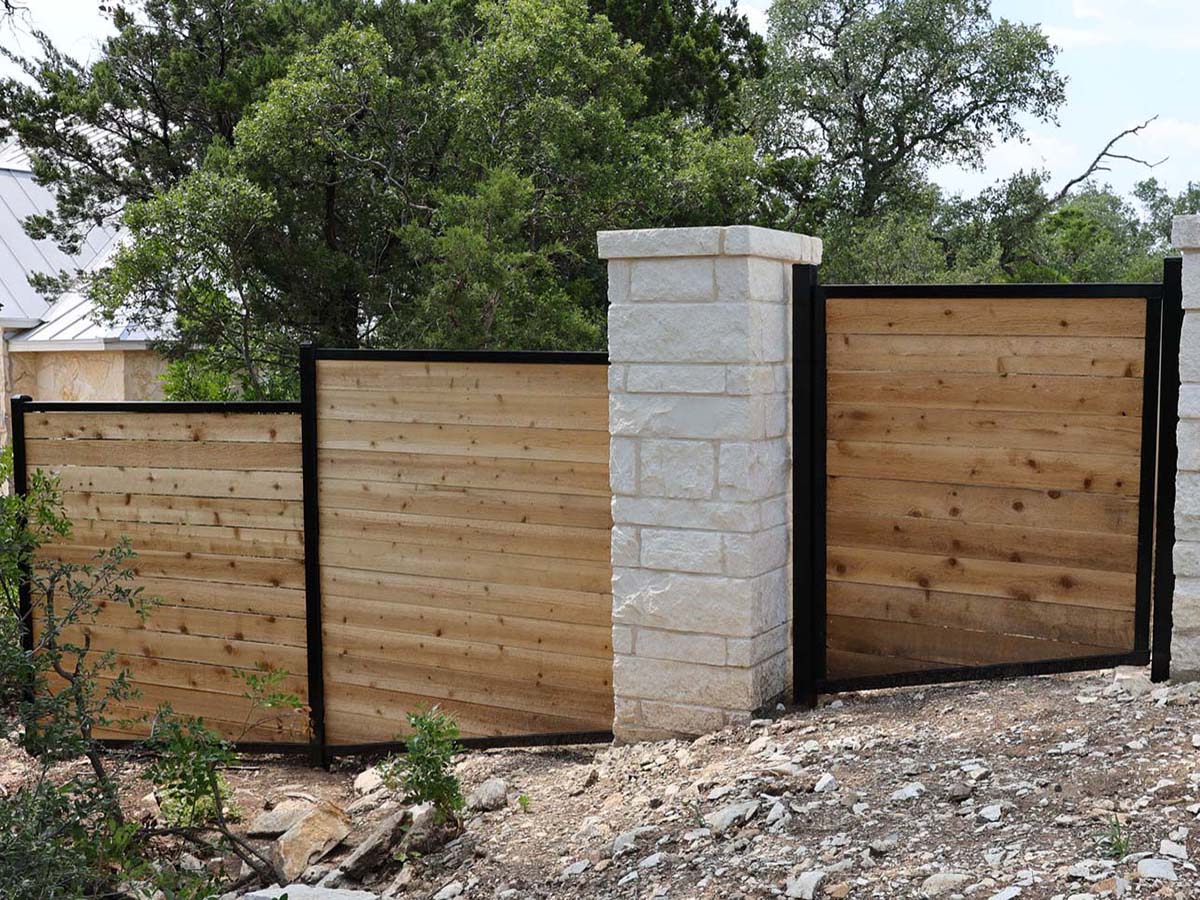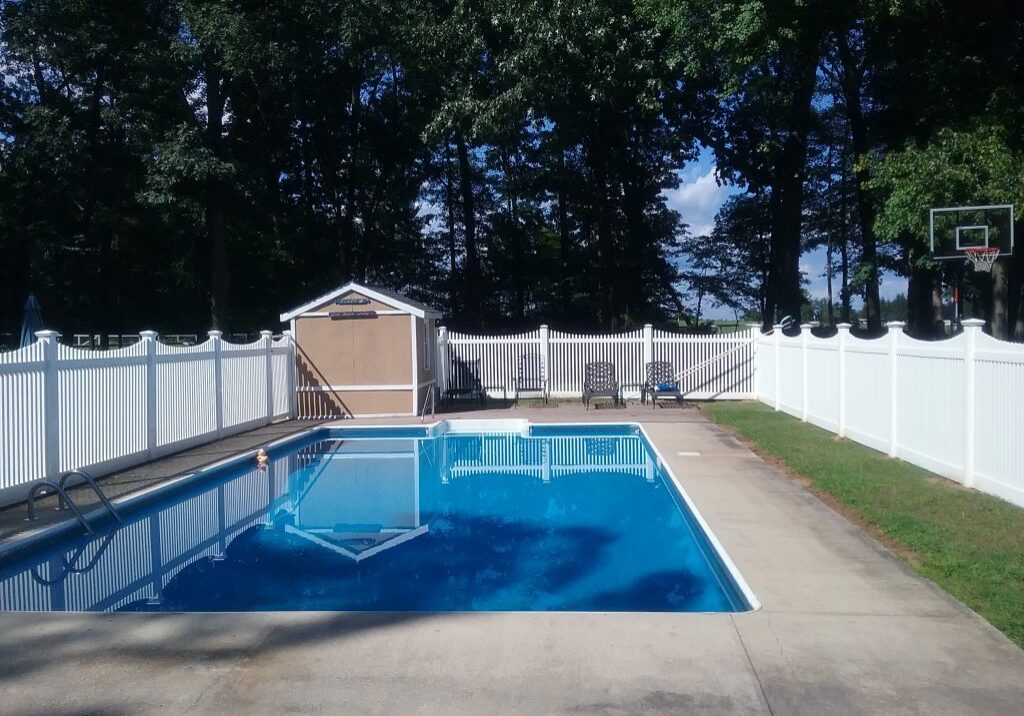All Categories
Featured
Your fencing is a financial investment that provides privacy, aesthetic, and safety allure. To maintain it in excellent form, regular maintenance tailored to its product is important. Each fence kind has distinct maintenance requires based on its material's durability, direct exposure to the components, and various other variables. Right here's an extensive overview to maintaining different fencing products.
![]()
Climate Security: Apply a top quality sealant or tarnish every 2-- 3 years to safeguard the timber from dampness and UV rays. For extreme environments, annual reapplication might be necessary. Cleaning: Make use of a garden tube or a stress washer on a reduced setting to get rid of dust and mold. Follow up with a light detergent for stubborn stains. Repairs: Inspect for loosened or decaying boards and change them immediately. Tighten nails or screws to maintain the structure stable. Parasite Control: Use termite-resistant timber or treat the fence with insect repellents to stay clear of infestations. 2. Plastic Fences. Vinyl fencings are preferred for their resilience and very little maintenance demands.
Cleaning: Wash the surface with a yard hose or a mix of soap and water to get rid of dust and algae. For difficult discolorations, make use of a vinyl-specific cleaner or a soft-bristle brush. Evaluations: Consistently examine for fractures or warping, particularly after strong winds or hefty influences. Repair services: Replace any broken sections promptly. Vinyl fencings often use modular components, making fixings simple. 3. Chain-Link Fences. Chain-link fences are sturdy and economical however require periodic attention to avoid rust.
Corrosion Removal: Use a cord brush to eliminate corrosion from subjected areas, then apply a rust-inhibiting spray to secure the steel. Cleaning: Hose down the fence routinely to eliminate dust. For gunk, use soapy water and a stiff-bristle brush. Fixings: Tighten any drooping areas or replace damaged links to preserve safety. 4. Wrought Iron Fencings. Wrought iron fences provide sturdiness and beauty yet are vulnerable to corrosion otherwise correctly maintained.
![]()
Rust Prevention: Remove corrosion areas with sandpaper and use a rust-resistant guide adhered to by outdoor metal paint. Inspect for rust at the very least two times a year. Cleansing: Wipe down with a cloth and soapy water to maintain the surface. Prevent unpleasant cleansers that can damage the surface. Repainting: Repaint every couple of years to safeguard the steel from rust and maintain it looking fresh. 5. Aluminum Fences. Light weight aluminum fences are light-weight, sturdy, and resistant to corrosion, needing less upkeep contrasted to functioned iron.
Cleaning: Clean with soap and water to remove dust and dust. Wash extensively to stop deposit. Evaluations: Examine for loose hardware or damages, particularly after tornados. Safeguard or change parts as required. Touch-Ups: Use paint to scratched or broken areas to stop damage to the protective covering. 6. Compound Fences. Compound fencings are made from a mix of wood and plastic, incorporating resilience with minimal upkeep.
![]()
Cleansing: Use a hose or a soft brush with soap and water to cleanse the surface. Avoid making use of harsh chemicals. Assessments: Seek warping, particularly in extreme warm. Tighten up or change any type of broken panels. Build Prevention: While composite materials stand up to rot, maintain the fencing completely dry and clean to stay clear of mold and mildew build-up. 7. Bamboo Fences. Bamboo is an environment-friendly option yet needs careful maintenance to preserve its look and longevity.
Sealing: Use a protective sealer or varnish every 2-- 3 years to protect versus dampness and UV damages. Cleaning: Clean with moderate soap and a soft sponge or brush. Avoid high-pressure washing, which can damage bamboo fibers. Repairs: Change damaged posts or sections to maintain architectural stability and appearance. General Maintenance Tips for All Fence Types. Regular Assessments: Examine your fence at least when every season for damage, wear, or loosened parts. Cutting Vegetation: Maintain hedges, plants, and vines far from the fencing to stop moisture damage and decrease insect activity. Seasonal Adjustments: In areas with snow, avoid stacking snow against your fencing to stop architectural stress. In hot environments, check for heat-related bending or fading. Conclusion. Each secure fencing product has its unique upkeep needs, yet a proactive technique to care can prolong its lifespan and maintain it looking its ideal. Wooden fences require more interest compared to vinyl or aluminum, however each product take advantage of routine cleaning, examinations, and timely repair work. By customizing your maintenance techniques to the kind of fence you own, you'll guarantee that it proceeds to give curb, privacy, and safety charm for many years ahead.

- Wood Fences. Wooden fencings are valued for their all-natural appearance however call for regular maintenance to stop damage.
Climate Security: Apply a top quality sealant or tarnish every 2-- 3 years to safeguard the timber from dampness and UV rays. For extreme environments, annual reapplication might be necessary. Cleaning: Make use of a garden tube or a stress washer on a reduced setting to get rid of dust and mold. Follow up with a light detergent for stubborn stains. Repairs: Inspect for loosened or decaying boards and change them immediately. Tighten nails or screws to maintain the structure stable. Parasite Control: Use termite-resistant timber or treat the fence with insect repellents to stay clear of infestations. 2. Plastic Fences. Vinyl fencings are preferred for their resilience and very little maintenance demands.
Cleaning: Wash the surface with a yard hose or a mix of soap and water to get rid of dust and algae. For difficult discolorations, make use of a vinyl-specific cleaner or a soft-bristle brush. Evaluations: Consistently examine for fractures or warping, particularly after strong winds or hefty influences. Repair services: Replace any broken sections promptly. Vinyl fencings often use modular components, making fixings simple. 3. Chain-Link Fences. Chain-link fences are sturdy and economical however require periodic attention to avoid rust.
Corrosion Removal: Use a cord brush to eliminate corrosion from subjected areas, then apply a rust-inhibiting spray to secure the steel. Cleaning: Hose down the fence routinely to eliminate dust. For gunk, use soapy water and a stiff-bristle brush. Fixings: Tighten any drooping areas or replace damaged links to preserve safety. 4. Wrought Iron Fencings. Wrought iron fences provide sturdiness and beauty yet are vulnerable to corrosion otherwise correctly maintained.

Rust Prevention: Remove corrosion areas with sandpaper and use a rust-resistant guide adhered to by outdoor metal paint. Inspect for rust at the very least two times a year. Cleansing: Wipe down with a cloth and soapy water to maintain the surface. Prevent unpleasant cleansers that can damage the surface. Repainting: Repaint every couple of years to safeguard the steel from rust and maintain it looking fresh. 5. Aluminum Fences. Light weight aluminum fences are light-weight, sturdy, and resistant to corrosion, needing less upkeep contrasted to functioned iron.
Cleaning: Clean with soap and water to remove dust and dust. Wash extensively to stop deposit. Evaluations: Examine for loose hardware or damages, particularly after tornados. Safeguard or change parts as required. Touch-Ups: Use paint to scratched or broken areas to stop damage to the protective covering. 6. Compound Fences. Compound fencings are made from a mix of wood and plastic, incorporating resilience with minimal upkeep.

Cleansing: Use a hose or a soft brush with soap and water to cleanse the surface. Avoid making use of harsh chemicals. Assessments: Seek warping, particularly in extreme warm. Tighten up or change any type of broken panels. Build Prevention: While composite materials stand up to rot, maintain the fencing completely dry and clean to stay clear of mold and mildew build-up. 7. Bamboo Fences. Bamboo is an environment-friendly option yet needs careful maintenance to preserve its look and longevity.
Sealing: Use a protective sealer or varnish every 2-- 3 years to protect versus dampness and UV damages. Cleaning: Clean with moderate soap and a soft sponge or brush. Avoid high-pressure washing, which can damage bamboo fibers. Repairs: Change damaged posts or sections to maintain architectural stability and appearance. General Maintenance Tips for All Fence Types. Regular Assessments: Examine your fence at least when every season for damage, wear, or loosened parts. Cutting Vegetation: Maintain hedges, plants, and vines far from the fencing to stop moisture damage and decrease insect activity. Seasonal Adjustments: In areas with snow, avoid stacking snow against your fencing to stop architectural stress. In hot environments, check for heat-related bending or fading. Conclusion. Each secure fencing product has its unique upkeep needs, yet a proactive technique to care can prolong its lifespan and maintain it looking its ideal. Wooden fences require more interest compared to vinyl or aluminum, however each product take advantage of routine cleaning, examinations, and timely repair work. By customizing your maintenance techniques to the kind of fence you own, you'll guarantee that it proceeds to give curb, privacy, and safety charm for many years ahead.
Latest Posts
Enhance Your Home's Outside with Weathercraft's House siding Solutions
Published Apr 29, 25
1 min read
The Convenience and Efficiency of Charging Your EV
Published Apr 29, 25
1 min read
Why Pick Ron Marhofer Hyundai for Your Funding Demands
Published Apr 29, 25
0 min read